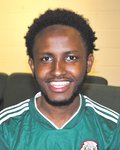

The first quarter grades for this year are in for St. Paul Public School students, and it appears that racial disparities are growing worse with distance learning.
In 2019, Minnesota ranked 50th when it came to racial disparities in high school graduation rates. Nearly half of all St. Paul Public School students (grades 6-12) failed a class in the first quarter of the 2020-2021 school year. Failing grades are two and a half times more common than last year, and Students of Color are more than twice as likely to be failing a class as their White counterparts.
This information was presented to the St. Paul School Board in a virtual public meeting on Dec. 15, 2020, in data broken down by racial and ethnic groups.
The numbers paint a picture of how students are struggling with the dual pressures of distance learning amid COVID-19. Students of Color, who make up 80% of the district’s student population, are disproportionately affected.
School board member Jessica Kopp said, “School, as we’ve known it, hasn’t worked for a lot of kids for a long time. There are so many things that we do a certain way, for no reason other than that’s how we’ve always done them. From students, from parents, and from colleagues, I’m hearing that this is the time to finally start looking at doing things differently.”
‘What are we going to do about it?’
According to Kopp, the rise in failing grades was disheartening, but not surprising, for those who heard the data presentation. She said, “The pandemic has laid bare what was already there. My feeling from the superintendent and the district staff is that the negative effect of our racial disparities is undeniable. The next question is, what are we going to do about it?”
There are 36,000 students in St. Paul’s Public School System, and they are experiencing school in many different ways. Kopp thinks the board needs to hear from students about what works for them – and what doesn’t – on everything from the structure of the school day to the content of their classes. She said, “We’ve nibbled around the edges of change for a long time in our public schools, but we need to take a much bigger bite. There’s energy and desire for this right now.”
One student’s story
Kalid Ali is a senior at Como Park High School, and holds down two part-time jobs. He is also a student at the University of Minnesota through the Post-Secondary Enrollment Options (PSEO) Program, and a member of the Student Engagement and Advisory Board (SEAB). The board currently has seven members from four St. Paul high schools: Central, Como, Harding, and Highland Park. Several of the representatives are first-generation immigrants. The role of SEAB is to amplify student voices and concerns, and to bring them to the attention of school board members.
Ali came to the U.S. from Ethiopia in 2013, when he was 10 years old. He was placed in ELL (English Language Learner) classes upon arrival, and stayed there for the end of fourth grade and the beginning of fifth grade.
English is not a compulsory language in Ethiopia, and Ali only knew half a dozen English words when he arrived. However, he learned quickly and soon asked to be placed in all-English speaking classes.
Ali is now advocating for ELL students in his role as a SEAB representative. He said, “ELL students make up a quarter of the students in the district, and more than half of them received failing grades in the first quarter of this year. Our families value education more than anything else. Many of our parents didn’t have had access to a good education, and they desire it strongly for their children. But the district is losing immigrant students because the education style may not be working for them.”
“The school board has to try and engage with the parents of students, even when there is a language barrier. They should hire translators, or offer English classes for them. Then the parents could impress upon their kids that distance learning in not something optional.”
Both Kopp and Ali underscored that the pandemic poses additional challenges for immigrant students. Many of them are essential workers in their families, providing necessary income to keep their families going. Also, older children are expected to care for younger siblings while their parents are working outside the home.
Share your input
The school board will host a series of special meetings regarding reopening schools in District #625 for school year 2020-21. Meetings will begin at 5 p.m. The public may monitor open portions of the meetings via live stream at www.spps.org/boe.
• Monday, Jan. 25
• Monday, Feb. 1
• Monday, Feb. 8
• Monday, Feb. 22
Comments
No comments on this item Please log in to comment by clicking here